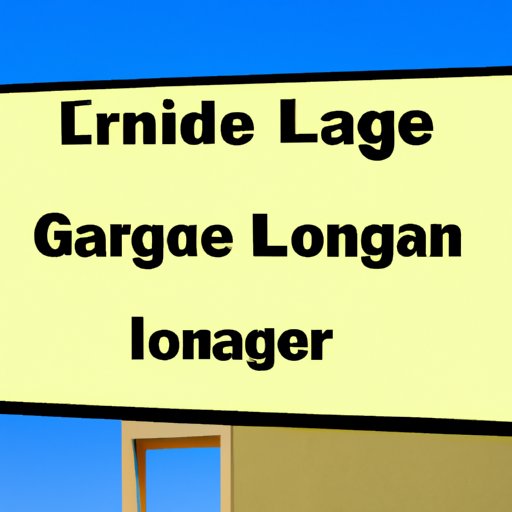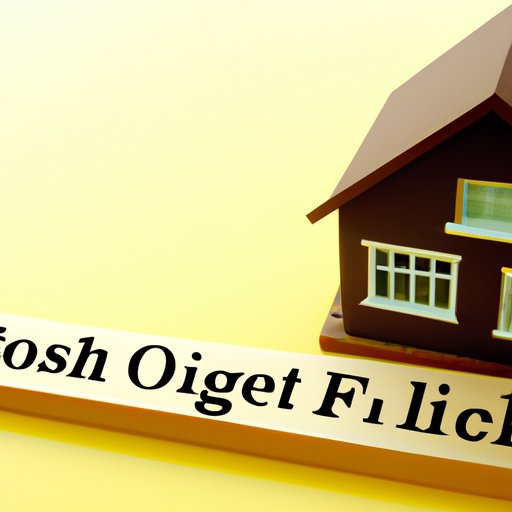Introduction
Purchasing a home is a major financial decision that requires careful consideration and planning. For some potential buyers, the challenge is even greater as they are faced with a cash only home purchase. A cash only home is a property that the seller will not finance, meaning the buyer must have the funds ready to pay in full at the time of closing. Although it can be intimidating, there are several options for financing a cash only home.

Save Up and Pay Cash in Full
The most straightforward approach to financing a cash only home is to save up the money and pay in full. This eliminates the need for any type of loan and can help buyers avoid interest payments and other fees associated with borrowing. Additionally, paying in cash gives buyers more negotiating power when it comes to price, as sellers are often willing to accept a lower offer from a cash buyer.
Saving up enough money for a home purchase takes time and dedication. It’s important to create a budget and track spending to ensure that money is being allocated in the right places. Building an emergency fund is also essential, as unexpected expenses can arise during the home buying process. Finally, setting a timeline and goals can help keep buyers motivated and on track to save the necessary funds.
Obtain a Personal Loan from a Bank or Credit Union
For those who don’t have the necessary funds saved up, a personal loan is another option. Most banks and credit unions offer personal loans, which are unsecured loans that can be used for a variety of purposes, including home purchases. The amount of the loan and the interest rate depend on the borrower’s credit score and financial history.
One advantage of a personal loan is that it can provide the funds needed for a down payment and closing costs. However, personal loans often come with higher interest rates than other types of loans, making them less ideal for long-term financing. Additionally, borrowers may be required to make monthly payments on the loan while the home is being purchased, which could add extra strain to their finances.
Utilize a Home Equity Line of Credit (HELOC)
A Home Equity Line of Credit (HELOC) is another option for financing a cash only home. A HELOC is a type of loan that uses the equity in a home as collateral. It allows homeowners to borrow up to a certain amount and then pay it back over time, usually with a variable interest rate. Because the loan is secured by the home, it typically has a lower interest rate than other types of loans.
However, HELOCs can be risky because if the borrower fails to make payments, the lender can foreclose on the home. Additionally, there may be additional fees associated with the loan, such as an annual fee or a closing cost. Finally, the amount of the loan can vary depending on market conditions, so it’s important to understand the terms before signing any documents.

Get a Bridge Loan from a Private Lender
A bridge loan is another option for financing a cash only home. A bridge loan is a short-term loan that is intended to “bridge” the gap between purchasing a home and obtaining a permanent loan. Bridge loans are typically offered by private lenders and often have higher interest rates than other types of loans. They are also usually only available for a short period of time, usually six months or less.
Bridge loans can be a good option for buyers who need to purchase a home quickly but don’t have the necessary funds saved up yet. However, it’s important to remember that bridge loans must be paid off within a certain timeframe, so borrowers should make sure they have a plan in place for how they will pay off the loan before signing any documents.
Explore Seller Financing Options
Finally, buyers can explore seller financing options. In this scenario, the seller agrees to finance the purchase of the home instead of requiring the buyer to obtain a loan. The buyer pays the seller in installments over time, often with interest. This can be a good option for buyers who can’t get approved for a loan or don’t have the necessary funds saved up.
However, it’s important to note that seller financing can be risky. If the buyer defaults on the loan, the seller can foreclose on the home. Additionally, it’s important to make sure the terms of the loan are clearly outlined in a written agreement, as this will protect both parties if a dispute arises.
Conclusion
Purchasing a cash only home can be intimidating, but there are several financing options available. Saving up the necessary funds and paying in full is the simplest approach, but it can take time and dedication. Alternatively, buyers can explore personal loans, HELOCs, bridge loans, and seller financing. Ultimately, the best option depends on the individual’s situation, so it’s important to do research and consider all of the pros and cons before making a decision.
(Note: Is this article not meeting your expectations? Do you have knowledge or insights to share? Unlock new opportunities and expand your reach by joining our authors team. Click Registration to join us and share your expertise with our readers.)
